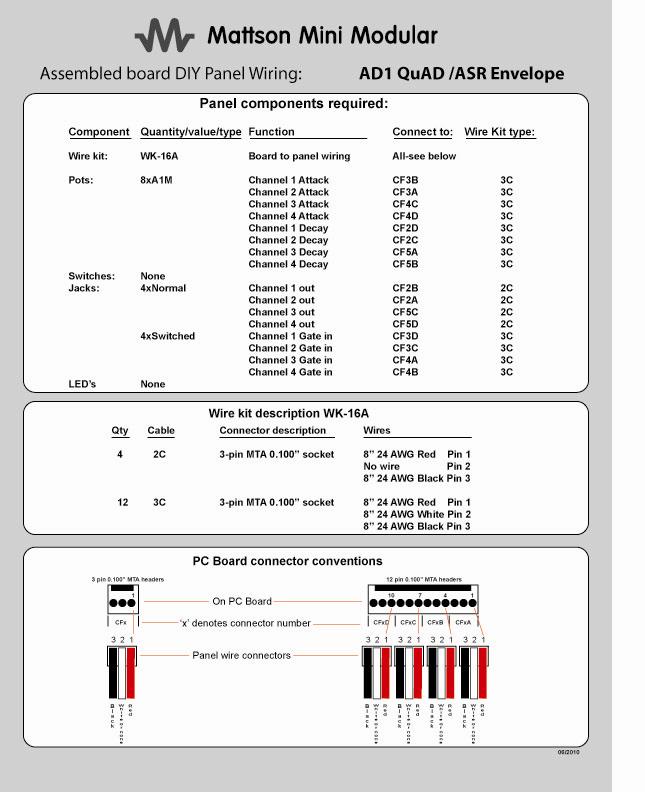Difference between revisions of "QuAD /ASR Envelope Generator Board"
| Line 1: | Line 1: | ||
| − | [[Image: | + | [[Image:AD1 PCB.jpg|400px||QuAD/ASR PC board]] |
The QuAD /ASR Envelope Generator consists of 4 identical channels. | The QuAD /ASR Envelope Generator consists of 4 identical channels. | ||
Revision as of 20:00, 9 August 2010
The QuAD /ASR Envelope Generator consists of 4 identical channels. This is designed as a utility module for basic Envelope utilization.
Each channel has an Attack and Decay user control.
There is a 4x dip switch on board for user selection of independent channel EG function.
AD Mode: When a gate is present at the channel input, the Attack stage is initiated, self completes, transfers to the Decay stage and drops at the Decay rate to 0 output level. The cycle won't repeat until the gate is dropped and re-applied.
ASR mode: When a gate is present at the channel input, The Attack stage is initiated, self completes and the output sustains at full output until the gate is dropped. When the gate is dropped, The Decay stage is initiated and the output drops to 0 at the decay rate.
The mode selection can easily be adapted for front-panel user access for the DIY'ers who wish to have the function readily accessable.
Gate Input: The Gate inputs are for a 5-15V gate input to initiate the envelope sequence. The gate inputs are cascaded. A gate input applied to channel 1 will initiate the Attack stage of all four envelope generators. A gate input patched into a different channel will interrup the cascade and apply the new gate voltage on the selected and all subsequent channels.
Attack: Adjusts the Attack time from minimum to maximum time. (Specs TBD)
Decay: Adjusts the Decay time from minimum to maximum time. (Specs TBD)
Output: Envelope CV output. 0-5V
Wiring information:
Availability
This module is available
$84.95
To order, visit the MMM Store
Go to board dimensions and mounting
